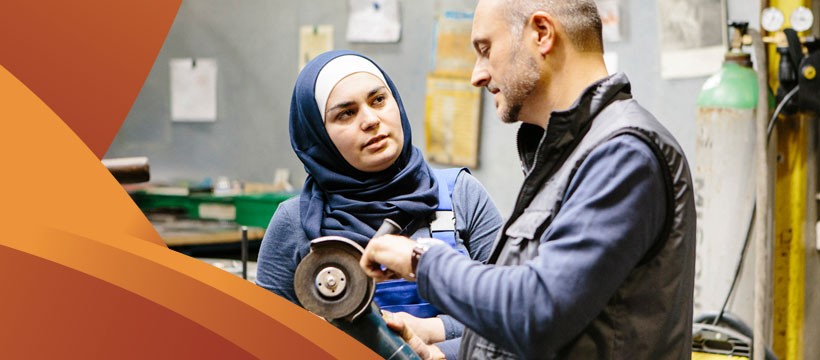Small businesses have found creative ways to keep moving forward despite closures during the coronavirus pandemic, from yoga studios, shifting classes online to local brewers pivoting to hand sanitizer production. But now as cities and states prepare to re-open, many small business owners are asking, “What’s next?”
There’s no question that the coronavirus pandemic will change the way we do business. If you’re wondering how your business can safely reopen and stay competitive after COVID-19, use these resources to learn what matters to employees and consumers and how you meet, but exceed their expectations.
Socially Distant Workplaces: The New Norm
Fewer people in your business means fewer opportunities for illness to spread. Use these resources to learn how you can maintain social distancing without sacrificing output.
- Consider keeping some staff remote even after re-opening. With the right collaboration tips and tools, you won’t sacrifice team cohesion.
- Need employees on-site? These social distancing tips explain how to keep staff safe.
- Employers can also implement shift patterns to reduce on-site employees.
- Whether employees are on-site or off, always make sure you’re taking steps to promote an inclusive working environment.
- Staff members aren’t the only ones entering your business. To limit customers without turning people away, consider switching to an appointment-based system.
- Businesses can also offer curbside pickup for customers who prefer to shop from the safety of home. Of course, this requires building an online store.
Keeping a Clean and Healthy Business
When customers patronize your brick-and-mortar business, they expect an environment that puts health and safety first. Here’s how you can ensure they walk away satisfied.
- Learn the basics of cleaning and disinfecting your workplace.
- Motion-activated doors, wipeable covers for electronic devices, and high-efficiency air filters are three upgrades that can keep your business clean with less effort.
- Don’t forget clean hands! Require regular hand washing for all employees and supply touchless hand sanitizer dispensers.
- It’s hard to convey a pristine image if your interior is worn and dated. Install new carpet to freshen up your business and save money doing it!
Get Financial Help to Keep Your Business Running
What if your small business needs more than a smart strategy to survive coronavirus? If you’re in need of a cash infusion to keep your doors open, here’s where to look.
- Several federal, state, and city relief programs help small businesses, including tax credits, grants, and loans.
- COVID-19 relief isn’t limited to the public sector. ZenBusiness is just one company offering grants to support small businesses.
- Women and minority business owners can also find financial assistance.
- Even with assistance, changes may be necessary to stay afloat. These steps will help businesses financially rebuild after COVID-19.
It’s never too soon to start thinking about what’s next. Whether your state is starting to lift lockdown measures, or your doors remain closed, make sure you’re planning for the future of your business. By developing a smart strategy for your business’s re-opening, you can get back to business while putting health and safety first.
This article contributed to Filsan blog by Elena Stewart






